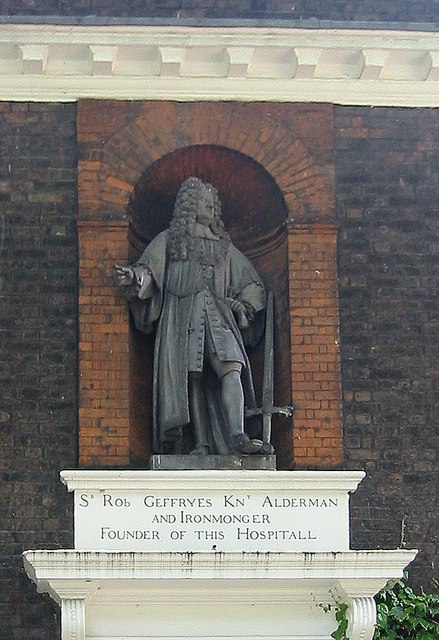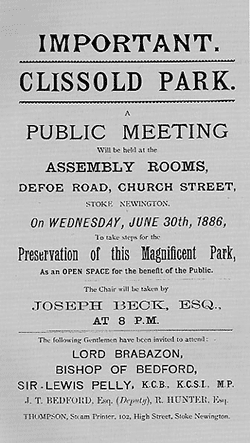It’s not often that an email from a museum pisses me off, but that was a thing that happened this week.

A previous post covered the legacy of slavery in Hackney and looked at how slave owners are memorialised throughout the Borough. This was followed by an optimistic post encouraging people to engage with the consultation about the future of the statue of slave trader Robert Geffyre in the grounds of the Museum of the Home.
On Wednesday the Board of Trustees of the museum wrote to me with the outcome of the consultation:
Thank you for taking part in the consultation about the future of the statue of Sir Robert Geffrye at the Museum of the Home.
Alongside many other cultural organisations across the UK, we have a responsibility to act against injustice, and this includes acknowledging the legacy of colonialism and slavery within our history.
The statue of Sir Robert Geffrye on our building is a symbol of the historic connection the Museum buildings have to an English merchant whose wealth was partly derived from the forced labour and trading of enslaved Africans. Geffrye donated the funds to build the almshouses in which the Museum is housed.
Following a process of reflection, debate and research, and a consultation conducted in partnership with Hackney Council, the Board of Trustees of the Museum has taken the decision not to remove the statue from the Museum’s buildings.
The Board believes that the Museum should respond to the issues raised by this debate by continuing with its vision of change at a fundamental level, by diversifying the Museum’s workforce, creative partners, content and programming to become more representative and inclusive.
The Board feels that the Museum should reinterpret and contextualise the statue where it is to create a powerful platform for debate about the connection between the buildings and transatlantic slavery.
The Museum has a responsibility to reflect and debate history accurately and in doing so to confront, challenge and learn from the uncomfortable truths of the origins of the Museum buildings.
Many people took time to share their views in the public consultation. Overall, the response was in favour of removing the statue. However, feedback showed that what to do with the statue is a complex debate, full of nuance and different opinions.
The Board has taken the view that the important issues raised should be addressed through ongoing structural and cultural change, along with better interpretation and conversation around the statue.
When the Museum of the Home reopens – as a place to reveal and rethink the ways we live in order to live better together – we will also be addressing, in our galleries and programming, the connections between the British home and exploitative trade, value systems and physical objects, both historically and today.
We are committed to continuing to develop our programming and policies on anti-racism and equity to create greater diversity and representation at the Museum.
The Board’s full statement can be read here.
The Board has chosen to ignore the wishes of local residents and has instead opted for the tiresome conservative position that having a memorial to a racist on prominent display is a good thing to stimulate a conversation about history.
The Museum’s website now also includes, incredibly, a statement in support of Black Lives Matter:
Black Lives Matter
We strongly believe that museums should not be neutral. As a sector we have a responsibility to be inclusive and accessible.
We are committed to anti-racism and equity, and to working harder to make our organisation more representative.
We will learn from history and ensure our staff, programme and collection tell diverse stories and represent Black voices, artists, visitors and communities.
BLM has been consistent in calling for these types of statues to be taken down. Not taking the statue down is against the aims of BLM. It is not “neutral” – it is against Black Lives Matter.
The Board’s decision is so wrongheaded that ITV News has weighed in to make them look stupid:
In that clip Mayor Phil suggests that the Board are “out of touch” and Jermain Jackman (Hackney born and bred winner of The Voice UK) is clear about his anger at the decision.
Former councillor, writer and general comrade Patrick Vernon has called for a boycott (and he is right!):

A parody Geffrye Museum twitter account has been set up and is well worth a follow:

From that account I discovered that the first protest against the decision took place yesterday:

I think that the Board have groslly underestimated the strength of feeling about this in the community and will regret their decision.
My questions for the Board are:
- The Museum’s Director has stated previously that “Homes should be welcoming places of shelter and security, love and comfort. This is what we want our museum to represent We know that for many the statue of Robert Geffrye on our building represents abuse, oppression and the history of thousands of enslaved people torn from their homes and families and forced to work in appalling conditions.” Is this view shared by the Board? Is this still the view of the Director?
- Why was it the right to change the name of the museum from The Geffrye Museum of the Home to The Museum of the Home – but it is not right to remove the memorial statue to Robert Geffrye?
- How successful do you think you will be in “diversifying the Museum’s workforce, creative partners, content and programming to become more representative and inclusive.” when there is a massive statue of a racist slave-owner looming over the grounds? Why should the museum’s workforce have to face that every day?
- Given that none of the Board members are black, was your decision to retain the racist statue against residents’ wishes discussed by the museum’s Equality, Diversity and Inclusion Group?
- In the ITV News clip above, the Mayor of Hackney suggests that the Department for Digital, Media, Culture and Sport may have influenced the Board’s decision. Is this true and if so what was their input?
- You say on your website that “The feedback from the consultation was considered alongside other information when the Board discussed the future of the statue.” What was this “other information”?
- When will you be removing the statue of Robert Geffrye?






















